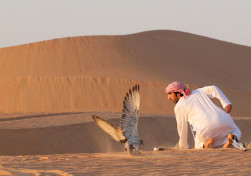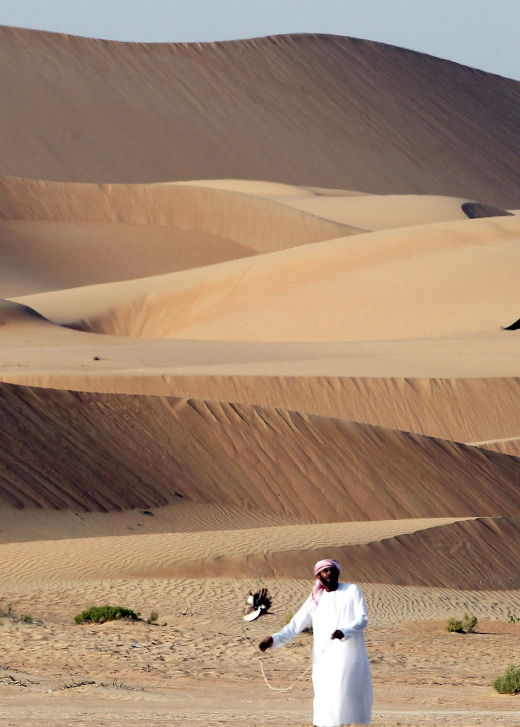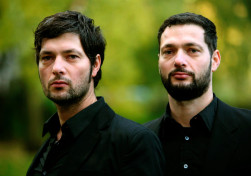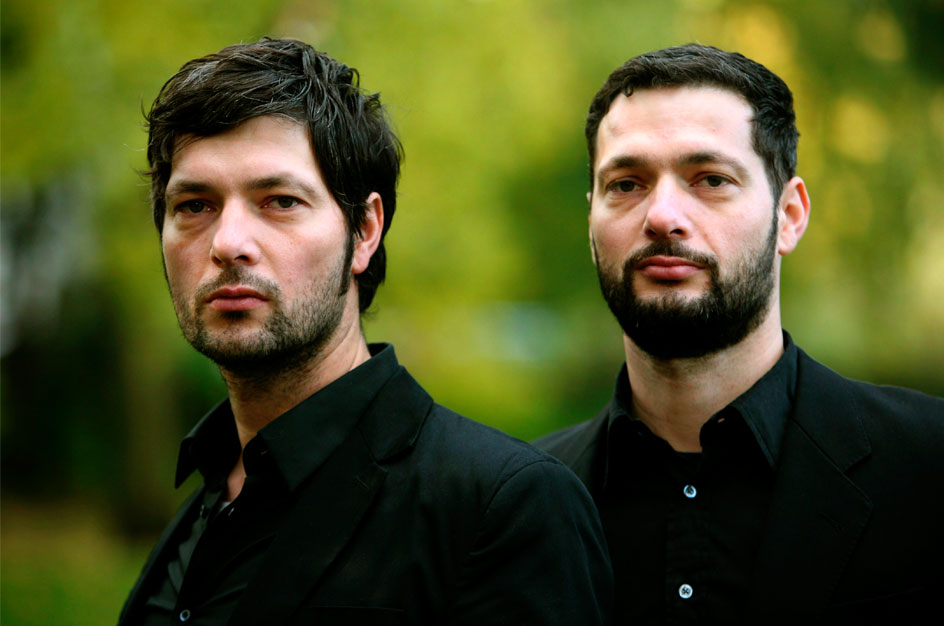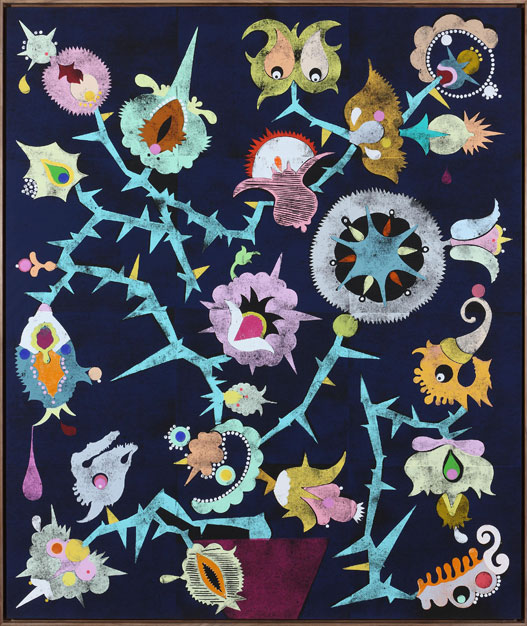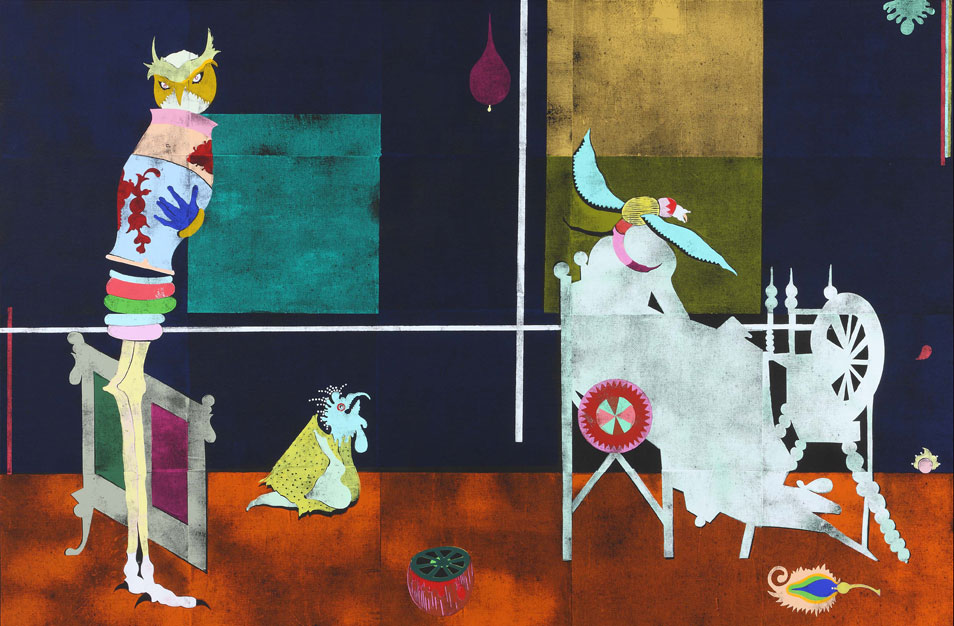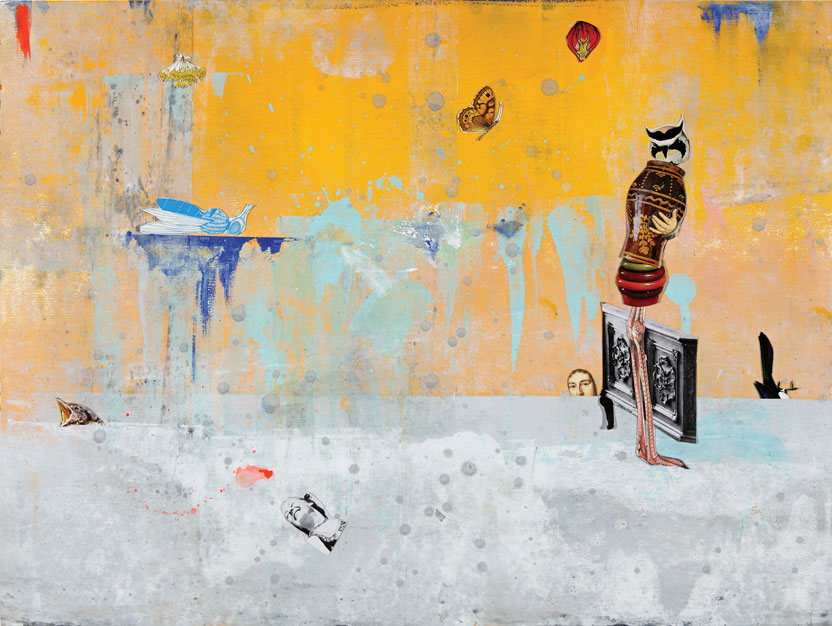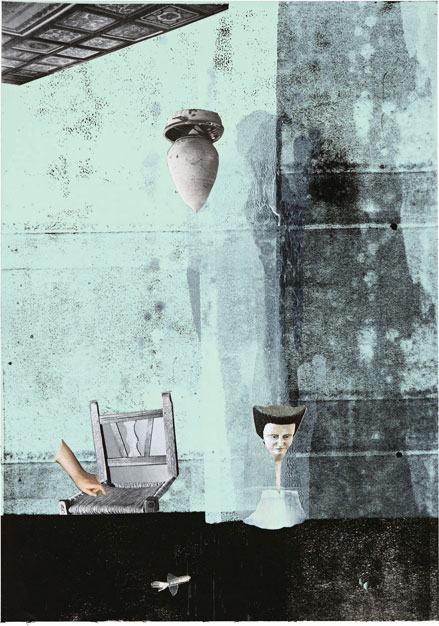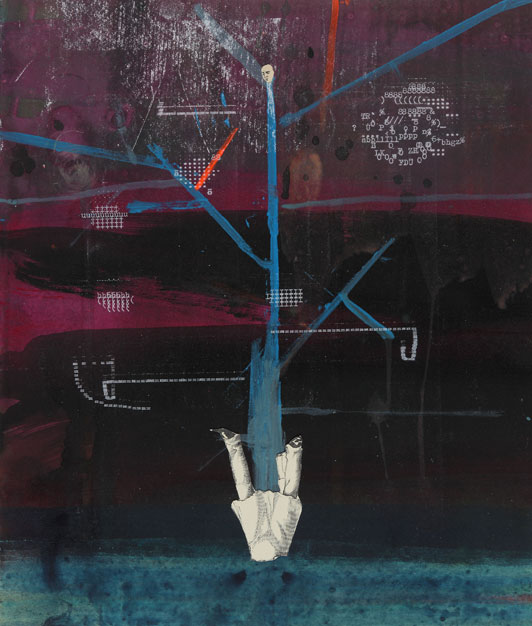It takes place in those empty lands that have fascinated men for millennia, a seemingly soundless world of sand and solitude. Sighting its prey with eyes round as dark marbles, the bird reels and swoops, diving at speeds of up to 200 miles an hour before rising again into the azure sky that canopies the desert. So it has been throughout centuries for the longwinged and shortwinged in this world of lures, snares, jesses, hoods and blocks.
The language of the Arabian falconer, like that of his counterparts across the globe, is as time-worn and universal as the sport of hawking itself. Most of us, to borrow a line from Hamlet, wouldn’t know “a hawk from a handsaw”. That, however, has not prevented a perennial fascination with what has been called the real sport of kings, no matter how much a pauper or commoner we might be. Who hasn’t caught sight of a hawk or falcon soaring on currents above the countryside and not been struck by its imposing appearance and mastery of flight? As a journalist who has spent much time in Afghanistan, a country with a long and fine tradition of falconry, I have often watched birds of prey in the mountains and deserts of that beautiful but troubled land. In his majestic book, Falconry in the Land of the Sun: The Memoirs of an Afghan Falconer, the legendary Sirdar Mohamed Osman, grandson of the King of Afghanistan, recalls his adventures across India, Pakistan and Central Asia in pursuit of his passion. But it is perhaps in the Arab world where this sport is most deeply and fervently pursued, binding man and raptor in an intimate dance of life and death.
In visits over the years to places as diverse as Iraq, Jordan, Qatar and the UAE, the sight of a falconer whirling a feathered, baited lure has become familiar as he teaches his bird to strike again and again at its quarry before swooping down to land on his gauntleted arm. And nowhere has this sight been so indelibly etched on my memory than in the reddish-orange desert dunes of the Rub al Khali, the Empty Quarter, which sits little more than an hour and a half’s drive south of Abu Dhabi. It was here in the late 1940s and early 1950s that the great British Arabist, Wilfred Thesiger, accompanied Sheikh Zayed of Abu Dhabi for months on camel back, sleeping in the open, feeding on hares and bustards that were the quarry of their falcons. “It was very still with the silence which we have driven from our world,” wrote Thesiger in what was to become his classic book, Arabian Sands.
The visitor to Arabia is often told that the desert life is over, and to a great extent it is true. But the silence that Thesiger speaks of can still be found, as can the Arab falconer. In these high-tech internet-dominated times, in this part of the world there remains a self-conscious defence against the tide of modernity. A region flush with petro-dollars and opulent lifestyles still has a burning need, it seems, to preserve a tradition that provides an ageless communion with nature. In this, the Arab love of falconry continues to play a vital role. Indeed in many Arab lands, the falcon has become part of contemporary iconography, its sharp-beaked, taloned image appearing on everything from company logos and cap badges to dirham banknotes. As another British Arabist and former MI6 spy master, Sir Mark Allen, points out: “With the camel, the Arab horse, the black hair tent and the Saluki [Persian greyhound], the hawk is a symbol of the desert Arab’s way of life... which he has cherished through all the traumatic changes of the last few generations.” Since he was 14 years old, hawking has played an enormous part in Allen’s life, allowing him as a Westerner to become accepted and to live and hunt with the Bedouin nomadic tribesmen of the Arabian desert.
For the Bedouin, raptors were originally used for hunting to supplement their diet of milk, bread, dates and rice with meat from hares or houbara, a large bird of the bustard family. These hunting expeditions were also a useful means by which tribal sheikhs could “tour” their territory and keep up with events. In cities such as Baghdad and Damascus, falconry used to have a rather grand following. Much of that has now gone, lost, as Allen says, “with a vanished world of pomegranates and sherbet”. For the layman, the world of the falconer is a mysterious one. To all but those with some knowledge of birds there is often confusion about the differences between a hawk and a falcon. Put simply, the birds used in falconry fall into two types: the falconidae, or longwings, comprise the dark-eyed hooked-beaked falcons that power dive on their prey from above; then there are the accipitridae, shortwing yellow-eyed true hawks, such as the sparrowhawk, which run down their quarry by “binding to” or grabbing them after a hectic chase. These days in the UAE the two main species of falcons to be found in the dunes of the Empty Quarter are the saker and the peregrine.
Historically, the Bedouin believe that the saker has more powerful eyesight than the peregrine. Sharing the cunning temperament of a cat, Arabian falconers swear by the saker’s intelligence and tell of how it will often lie down between driver and passenger for better balance on the front seat of a 4x4 bumping over the dunes. Such stories say much about the working intimacy that develops between falconer and bird. Buying the finest birds can command vast sums with prices of $20,000 not uncommon, and some fetching as much as $250,000. It’s hardly surprising then, that traditional as many aspects of Arabian falconry continue to be, birds often have GPS transmitters attached to their tail feathers to track them should they go missing. But first, the falconer must acquire his bird, and historically, the methods and ruses used by Arab trappers have been varied and ingenious. These range from pigeons used as bait with slip nooses on a light frame attached to their backs, to deploying smaller decoy hawks also with nooses attached. This makes them appear as if they are carrying a kill, which then becomes a target for larger birds, which inevitably become entangled in the noose themselves. Hides and nets, too, have been used to capture these elusive creatures.
In countries such as the UAE today, however, there are strict controls on trapping falcons as well as their use in hunting the king prey of houbara. Indeed many falconers have now become committed conservationists. The Falcon Passport, a scheme started in 2002 in Abu Dhabi, prevents the illegal trading of falcons, with the bird’s country of origin, permit number and date of last export or import forming key data in the document. But the same rules do not always apply in other parts of the world, especially when it comes to hunting with falcons. As a result, many Arab falconers now travel overseas, purchasing permits to hunt in places such as Pakistan. The legal supply of raptors from many of these countries remains a substantial business. Some years ago while working in Pakistan’s North West Frontier Province along the border with Afghanistan, I met a Pathan trapper in the city of Peshawar, who regularly acquired birds for Middle-Eastern clients. A keen falconer himself, he and his friends would frequently gather for meals at the hotel he owned. With them they brought falcons and hawks, which they habitually leashed to the nearest furniture in the absence of a proper “block” or wakr. I became fascinated with the elaborate paraphernalia of the falconers’ trade.
The jesses or short thongs that attach to the birds legs; the leash that, in turn, runs from the jesses to the block where the hawk spends most of its time when not in flight; and, of course, the hood, or burka in Arabic. Kept in pitch darkness, the bird will sit motionless with no thought to fly for fear of breaking feathers. The hood keeps the bird calm, avoiding any stress. Where Japanese falconers once believed that hawks were afraid of the human voice, Arabs have traditionally taught their hawks to know their names, which are short and easy to call, such as Dhib, (wolf) or Sabah (morning). At a time when Middle Eastern countries such as Qatar and the UAE are experiencing a dislocation from the past due to accelerated economic change, falconry remains a tangible link to another way of life. But it would be wrong to over-romanticize this passion. While in the West hawking is regarded as a sport, in the Arabic language there are no equivalent words for that notion. Of course it has words that mean pastime or exercise, but in the case of falconry its roots and the words used to describe it will always be associated with hunting.
Given today’s hunting restrictions, however, hawking has taken on a new significance ever since the first International Falconry Conference (IFC) was inaugurated by Sheikh Zayed Bin Sultan Al Nahyan in Abu Dhabi in 1976. Since then, falconry has played an increasingly significant role in the much wider heritage, culture and identity of the UAE. It is a measure of how seriously the Arabs of the Emirates take their falcons that the country has created a world-renowned veterinary clinic, the Abu Dhabi Falcon Hospital (ADFH), which opened in 1999. In its first 12 years more than 50,000 “patients” have passed through its doors. Whether it’s disease, diet or broken wing feathers, falconers go to great lengths to maintain the health of their birds. Today in Abu Dhabi men dressed in what were once clothes of the desert but are now national dress can be seen queueing with their birds on temporary blocks at the city’s famous falcon hospital. “The bird is part of my life, my identity, and for that reason it deserves whatever loyalty I can offer it, when it is in need,” is how one Emirates falconer described his decision to visit ADFH. Every year the UAE further highlights its commitment to the hawking tradition when it holds the Abu Dhabi Falconry Competition and Festival as part of its national day celebrations. Some 600 falconers and more than 1,100 birds participated in the contest towards the end of last year, split into three disciplines. With up to a million dirhams ($275,000) on offer in prize money, the biggest pot goes to the owner of the falcon covering 400 yards in the fastest time.
In another event, birds follow a model plane with a “bait tail” trailing behind it, the winner being the falcon that flies the longest distance and time. “It’s a new technique,” explains Mohammed Al Mahmood, general secretary of the Abu Dhabi Sports Council. “It’s the first time it has been done in a competition.” In the final event the birds are timed from the ground to a balloon more than 600 feet in the air. Speaking at the finale of the competition, President His Highness Sheikh Khalifa Bin Zayed Al Nahyan said that he hoped that the event would promote genuine heritage from which “valuable lessons” might be learned by youngsters, especially in “patience, courage, generosity, heroism, challenge, endurance and other noble principles”. It was Sir Mark Allen who, on one occasion having difficulty with a restless peregrine, was given the advice of a Bedouin falconer: “Take off his hood, let him watch the Arabs and be content.” In the past, a generation of Gulf Arabs was content with the fact that the noble art of falconry provided a means of feeding their families, but clearly they believed that hawking meant more than just that. Today, as Allen has observed, the Arabs may no longer fly their birds with “the careless ferocity and zest of the past”, but few would deny that there still remains something utterly majestic in this magical aerobatic display of grandeur and tenacity.
Your address: The St. Regis Saadiyat Island Resort, Abu Dhabi; The St. Regis Abu Dhabi. A tour of the falcon hospital can be arranged for guests.
Gert and Uwe Tobias are no ordinary artists. Identical twins born in Romania 40 years ago, they work together to create vivid, large-scale woodcuts that are as haunting as they are alluring. Twisted faces, dismembered pieces of furniture, hearts, flowers, lizards, human eyes and staring owl heads are intermingled with old-fashioned typewriter lettering to create imagery that, while drawing from European Romanticism, Transylvanian folklore and even the geometry of the Bauhaus, invents a world all of its own – dense, dreamlike and undeniably beautiful.
These days the twins – tall, athletic and with the sort of looks that wouldn’t be out of place on a Milanese catwalk – are based in a studio complex in Cologne. There, in a suite of Rationalist buildings, they have their studio, their homes, their parent’s home and a gym – they work out for at least an hour a day. They started collaborating in 2001, after years of trying hard not to. “We wouldn’t work together if there wasn’t a point,” says Uwe, the elder by five minutes. “But the trust we have as brothers to give and take criticism really enables our work to progress.” Gert concurs: “Creativity requires friction and antagonism, and we both have loud voices,” he laughs, “but the building is still standing.”
In recent years, the international art world has been increasingly taken by their work – a dramatic large-scale collage had pride of place in the booth of their New York gallery, Team, at Art Basel Miami Beach last December – and collectors are queuing up to buy pieces, among them Hilary Weston, the wife of Canadian billionaire Galen. (The Westons own the upmarket department stores Holt Renfrew in Canada and Selfridges in London, among other assets.) Nice work, chaps.
Your address: The St. Regis Bal Harbour Resort
Image of Gert and Uwe Tobias by Corbis
Untitled 2012
“The starting point for this piece is chinoiserie, and the composition is like that of a tapestry,” says Gert, who with his brother was inspired by exquisite 18th-century chinoiserie prints they discovered in Dresden’s Kupferstich-Kabinett – a museum specializing in prints and drawings. But while the imagery of tapestry is traditionally that of hearts, flowers and delightful woodland animals, in the artists’ hands darker elements, such as skulls and strange creatures, appear in their place. “The colour invites you into the picture,” Gert says. “Then we try to unsettle the decorative appeal by introducing the spikes and thorns.”
Untitled 2012
The Tobiases say that it’s simply a lucky coincidence, allied with their immense curiosity, that led them to work with print and woodcuts. “We have redefined woodblocks,” Uwe says. “In a traditional German woodcut you can see the artist’s hand, how he has carved the piece, as well as the grain of the wood. We use a cut-out form that then takes the ink.” In their carefully calibrated collages, the twins don’t aim to tell a story but to present a range of images that, they say, “the imagination of the beholder can work into their own narrative.” Images, such as the spindle on the right (above) are reminiscent of fairytales. The owl – all seeing and all knowing – is a favoured creature in their world.
Untitled 2012
There is a dark humor in the artists’ dislocated collages. Heads are often shaved into cone-shaped forms; legless chairs float across the canvas. “Humor is a means of analysis, rather than a joke,” Gert says. “It moves the work away from its origins in folklore and Romanticism, and breaks with tradition.” The twins work on pieces individually, but begin each new project with drawings that form the basis for discussion. “All decisions are shared,” Uwe says. “And the exciting thing is that the sum of our working together is so much bigger than the two parts. We’re not a cliché of symbiotic twins, though in terms of taste and interest, we have a lot of common ground.”
Untitled 2012
You won’t find many primary colors in the Tobias brothers’ work. Their palette is one of cloudy pastels and worn-away blacks. These color choices, as well as their love of collage, connects them art-historically with the Surrealists, as do the strangely composed creatures, floating faces and dismembered pieces of furniture that dance across their canvases. “There should be a moment of familiarity on initial contact, in that first moment when you look at a piece of work,” they say. The next stage, of course, is when the beholder realises that all is not as it seems. Photography, for example, brings a sense of reality, that’s quickly cancelled out by a bewildering array of disparate details.
Untitled 2012
The pair use the dainty letters of the traditional mechanical typewriter, like so many tiny cross-stitches, to punctuate their canvases and create silhouettes of animals or skulls, for example. “The typewriter letters present a set of limitations, but they come with a very particular atmosphere of their own,” Uwe says. “They’re visually pretty,” Gert continues, “and they have a historic quality. We are aware of our historicity.” Embroidery and needlework are recurring themes in their work: for the twins, they are a symbol of historic tradition as well as an evocation of the humble, emotional human quality of handicraft, and a reminder of their old life in Transylvania.
